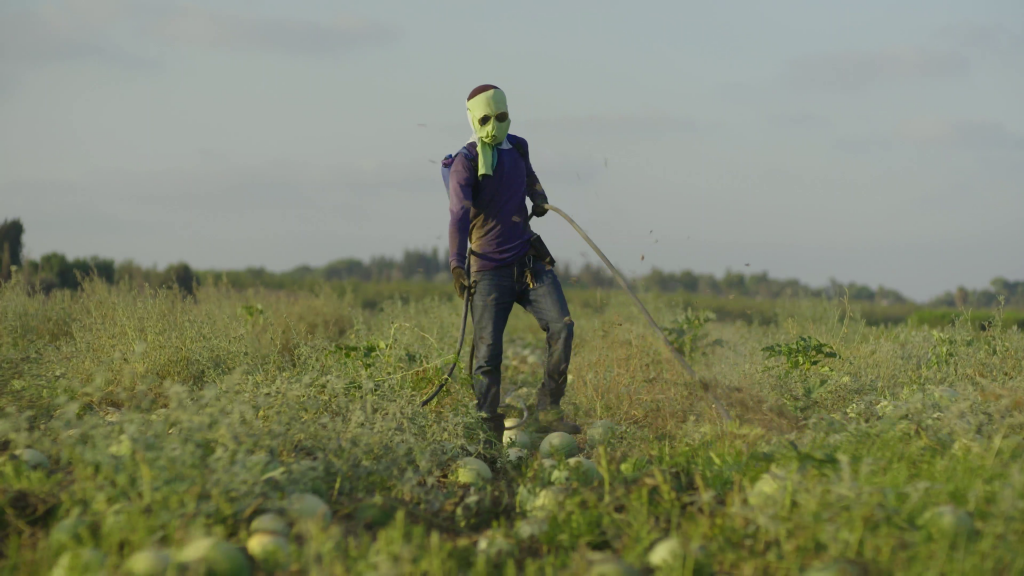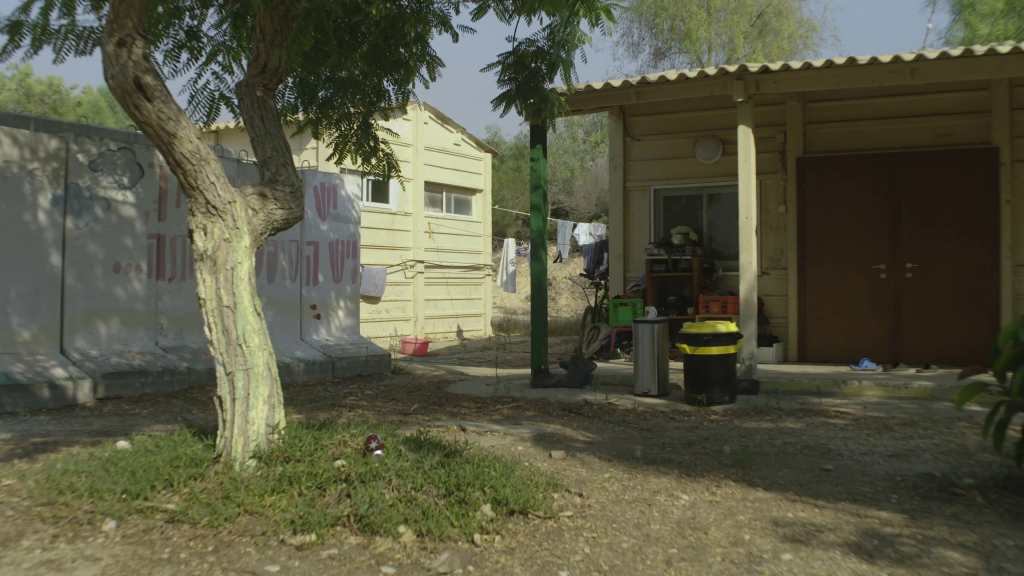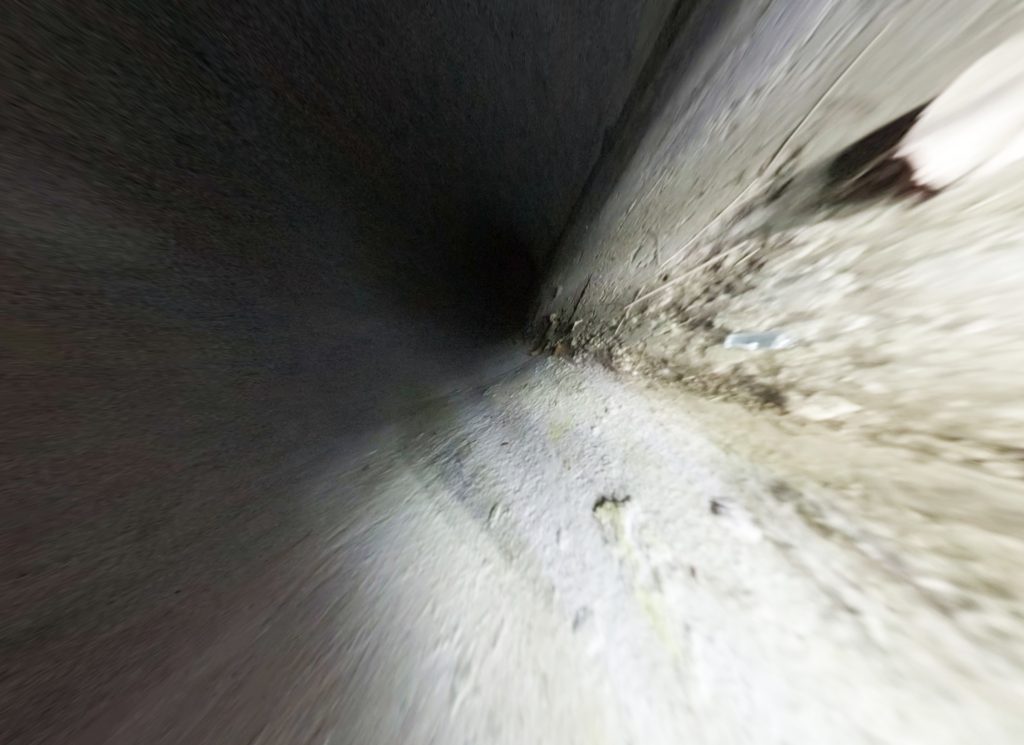Jonathan Omer Mizrahi: In your work, you often look at the Israeli agricultural settlements, how they work, from the negation of self-labour, the colonization of indigenous Bedouin farms and modernization of entire environments. Could you draw how these settlements came to be and how they evolved to today’s neo-libiral economy?
Matan Kaminer: I did my ethnography in the Arabah, a region which is in some ways unique. It is a climatically extreme area, very dry and very hot in the summers. But as you mentioned, recent research has shown that the Bedouin inhabitants managed to practice a sustainable form of agriculture there over hundreds of years, while also herding animals. Before 1948, the Arabah had about the same number of inhabitants that it has now – Bedouin who spent the winters there with their herds and moved into the mountains on either side of the valley in the summers. In 1949, at the very end of what Israelis call the War of Independence and Palestinians call the Nakba, the IDF conquered the sparsely populated southern half of the country, including the Arabah. The Bedouin were expelled over the borders, to Egypt and Jordan, but there was no permanent Israeli settlement in the Arabah until the 1960s, when moshavim (cooperative settlements) were set up in the center and kibbutzim (communal settlements) in the south. The government wasn’t convinced that there was any “need” – that is, any security need – to settle this very remote and climatically challenging zone, but a group of young people who had grown up in moshavim lobbied David Ben-Gurion, Israel’s founding father, and he helped them get authorization to start first one moshav, Ein Yahav, and then several more – Hatzeva, Paran, Tzofar, Idan.
From the moment they were established, the moshavim did get a lot of government support, especially for pumping water out of very deep and non-replenishing aquifers. With that water and with roads leading to central Israel, they were able to make a good living by growing summer vegetables (tomatoes, cucumbers, peppers) in the winter for the national market. In this period, especially after the occupation of 1967, most Israeli farmers started depending on cheap Palestinian workers, but in the Arabah this didn’t happen – partly because they kept up the orthodox ideological position of rejecting Arab labor, and partly because Palestinian population centers were just too far away.
All this started changing quickly in the mid to late 1980s, for two reasons: one, Israel’s shift to a neoliberal economic track in 1985, which entailed a pretty rapid shift away from government protection for sectors like agriculture, which were previously considered strategic. Farmers increasingly had to get credit on the open market, to compete against their neighbors, and to worry about competition from foreign producers. In more central parts of the country this led to a turn away from agriculture, with a lot of the land getting snapped up for residential real estate. In remote places like the Arabah this wasn’t an option, obviously. The second major event was the First Intifada, the first Palestinian rebellion against Israeli rule which broke out in 1987. The government understood that dependence on Palestinian labor was a weakness and started looking abroad for a workforce that could replace it.

Thus, even though it had never been dependent on Palestinian workers, the Central Arabah became one of the biggest customers of Thai labor when it began to arrive in the 1990s. The region’s economy shifted from production of various vegetables for the national market towards specialization in one product – bell peppers – for the European market. More competition meant lower prices which meant that production had to be extended to make a profit. More land was grabbed up by greenhouses, destroying natural ecosystems (as covered in the work of anthropologist Liron Shani); more water was sucked out of the aquifers, leading to their salinization and depletion; and much more labor was needed. This labor was provided by Thai migrants, whose population equaled the Israeli population of the region beginning around 2000. Today there are about 3000 Thais and 3000 Israelis in the Central Arabah.
J.O.M: In Thailand, General Pichit Kullavanijaya started to look at those settlements, particularly those that sit on the borders. He wants to acquire knowledge about “frontier settlements.” and apply it as new communities in the Thailand border with Laos and Cambodia. What was he looking for and why?
M.K: Unfortunately I’ve never had the chance to speak to Gen. Pichit, so all I can say about his thinking is what the documents say. Pichit was a graduate of the US Army’s West Point Academy, where he’d met Israeli officers. He was also a veteran of the counter-insurgency against the Communist Party of Thailand, which he helped to defeat in the early 1980s. Subsequently, he was put in charge of the Cambodian frontier, which was destabilized following Thailand’s participation in the horrendous civil war in that country. In 1984, he wrote to the Israeli embassy as follows:
“Thailand has encountered many obstacles along the border […] There has been heavy fighting, which has affected Thai national security and economy […] Besides, there are a large number of refugees who have fled into Thailand, creating problems for the Thai government, not only with respect to increased burden on the country but also with respect to the care which must be taken […] about communist infiltration. […] Israel is a country which has experienced problems relating to security and economy in border areas similar to Thailand […] Israel has been able to tackle these problems with respect to security and economic stability in the border areas successfully, […] based on highly efficient cooperation between the people and the state to a high degree in economic development and maintaining security in these border areas.”

To be clear, Pichit had no particular interest in the Arabah; but he was interested in how Israel had used agricultural settlement to stabilize its control over so-called frontier zones, both within Israel proper and in the Occupied Palestinian Territories. By this time, I should say, this was kind of an obsolete concept in Israel itself. In the 1980s Israel wasn’t really setting up agricultural settlements anymore – the new settlements in the West Bank and the Galilee were primarily suburban. Moreover, the diplomats at the embassy were very wary of the project because they didn’t want to get involved in Cambodia. But Pichit was an up-and-coming politician, who many people expected to become prime minister, so they didn’t want to disappoint him. They decided to say yes to the project but to demand that the Thais pay for the whole thing, in the hope that the money would dry up long before Israel would be expected to actually help in setting up settlements in Thailand. The one concrete outcome of the project that I have actually been able to trace is a delegation of military and civilian officials who came to Israel in 1987 to tour various “frontier settlements,” again including both Israel and the Occupied Territories.
J.O.M: Within two years after the delegation, thousands of Thai workers arrived to work in Israel. Back then, they were referred to as “volunteers” for agricultural learning purposes, which allowed the Israelis to exercise a set of exploitative employment conditions while maintaining the make-believe of the old self-labour settlement and Israeli agricultural prosperity. You analyze this employment period to be operating from what you call “exploitation anxiety”. How has avoiding dependence on Palestinians shaped labor policies? and what does this reveal about the power dynamics involved?
M.K: Well, to succeed in academia, you have to make up phrases that other people will cite later… My term “exploitation anxiety” actually attempts to describe an attitude that is prevalent throughout the history of the Israeli labor settlement movement, from the beginning to this day. It’s an ideological orientation which holds that there is something morally wrong about exploitation, not for what it does to the people being exploited – that’s basically true by definition – but for what it does to the exploiters. Starting settlements that would be purely Jewish was a strategic decision for the Zionist colonists – both for immediate military reasons, but also because they realized that by providing Palestinian peasants with work, they might actually strengthen their hold on the land. Labor Zionist ideology gave this strategic understanding a moral twist, saying that Jews had to learn to work the land for themselves and that dependence on others, especially but not only Palestinians, would destroy the moral integrity of the project.

This was most explicit in the early days, when they had to distinguish themselves from the so-called bourgeois settlers of the First Aliyah, who were happy to employ Palestinians. But to a great extent it remains the case today. In my analysis, one of the main “services” that Thai migrants provide to the settlements of the Arabah is their cooperation in the work of making themselves and their own labor invisible. It’s not that anyone actually thinks the agricultural labor is being done by Israeli Jews; but the Thais help that fact to not be “in your face”, such that when farmers produce advertising and PR in which all the work is done by cosplaying Israelis, it doesn’t look totally ridiculous.
To return to your question, with regard to the early days of the traffic in workers I actually came up with another term, “structural hypocrisy”. The idea here is that everyone is lying to everyone else and to themselves – the Thai military, the Israeli government and employers, they’re all pretending that they’re engaged in a project of “training” and “aid” to set up settlements in Thailand, whereas what they’re really doing is importing cheap labor and looking for ways to take a cut of the money involved. After a few years, in 1993, the pretense was dropped, but what interests me as an anthropologist is why they had to tell themselves this story to begin with. And my answer is that this was a transitional period, in which the new economic structures were not yet ideologically legitimate, so this hypocrisy was a sort of discursive bridge from one period to the other.
J.O.M: In our context, the marriage of Israel’s agricultural industry and its settlers’ foundation requires variable frontier methods to ignore the struggles behind their borders. In agricultural spaces both in Isaan and Palestine, there has been a shift from self-sufficiency to market dependency over time. How has this transformation impacted local communities and their connections to their land?
M.K: I don’t think it’s about ignoring the struggles; decision-makers in both countries have always been very attuned to these struggles, although there’s always an aspiration to achieve “normalcy” and stability – if that’s what you mean. But what I argue is really central and shared to the thinking of elites in both countries is the close connection between commodity production and this sort of security and stability. In both Isaan (the northeast part of Thailand that migrants to Israel come from) and Palestine, including the Arabah, until the mid-20th century the inhabitants primarily produced for their own needs and subsistence. They participated in markets, but grew or raised most of their own food. This provided both a strong bond with the land and a degree of independence, especially from the need to work for someone else in order to make a living.
Both of these areas underwent what Marxists call “primitive accumulation” in the period following World War II. This is the process whereby people are violently dispossessed of their land and become dependent on markets and wage-labor to survive. It happened in very different ways to Palestinians and Isaanites, of course: Palestinians, including the Bedouin of the Arabah, were simply ejected from their land and became (sorry for the Marxist jargon again) a “surplus population” mostly denied gainful employment. In Isaan, people didn’t lose their land directly but incorporation into markets and population growth made it impossible to keep making a living off the land, and they began migrating: first to Bangkok, where their labor fueled the city’s industrial growth, and then farther abroad, eventually arriving in Israel too.
This is what actually tends to happen when areas that were previously under subsistence production get subsumed into markets: rises in productivity following technological advance and specialization tend to empty those places out, and people move to cities, whether they can actually find work there or not. In the medium term, this stabilizes the frontier zones since they are no longer populated by independent people who may or may not be attached to the state, but by workers who depend on getting a wage in order to live, since they can’t live off of whatever cash crop they are producing (you can’t eat only peppers, not to mention cotton). But in the long term, I think pushing millions of people into cities where most are not going to have gainful work is creating a time bomb – just look at Gaza. Remember that most of the population there is descended from peasants that were expelled by Israel in 1948.

J.O.M: During the outbreak of war in October 2023, after 41 Thai workers were killed and 31 were kidnapped, we began organizing under “Aid for Farmworkers” to provide humanitarian support to thousands of Thai survivors from the Gaza Envelope region. We have observed the discriminatory treatment of the Thai survivors and the pressure placed on them to resume work. While many workers have been evacuated from the border to other farms or back to Thailand, we are witnessing a massive return of workers to the war zone along the border regions near Gaza and Lebanon. To save the crops, most of these abandoned villages on the borders are now inhabited only by Thai workers and their employers, who are often exposed to missile attacks and sometimes killed. If frontier agricultural settlements were meant to stabilize these borders, as Israel promoted to General Kullavanijaya, they have completely failed. Do you agree? To what extent do Israel’s borders depend on agriculture, and by extension, on the sacrifice of workers’ lives?
M.K: The question of failure and success is very tricky. Take Pichit’s “Frontier Settlement Project” – on its own terms, it was a total failure, as no settlements were ever set up (at least as far as I know). But it paved the way for a lot of the people involved to get rich through a labor flow that they probably weren’t even thinking of facilitating at the get-go. So of course Hamas’ success on October 7th was a huge failure for Israel, and many of us – myself included – were at first quite sure that it would be career-ending for the Israeli leadership, first and foremost Netanyahu. But that man has 99 lives; at least as things look now, he has come out on top while turning large parts of the Middle East into disaster zones, beginning in Gaza but now moving into Lebanon, and who knows what next. Is that a success as far as the long-term security of Israelis is concerned? I would say absolutely not, but many, perhaps most Israelis would disagree with me at this point. Maybe they’ll change their minds later.
Rather than talking about success or failure, what we can do as researchers and artists is to try to tease out deeper patterns that are in a way independent of people’s intentions and even their conscious knowledge. I think your film and my book both try to grope at the many facets of the work of colonization: military, agricultural, and socio-cultural; and at the way that actors in the drama can be replaced with other actors while the underlying, oppressive dynamic remains. It doesn’t remain the same, because it’s alive, dynamic, ahead of the curve. We’re always behind that curve, but maybe we can catch the snake by its tail. And then it might snap around and bite our hand, but if we’re quick enough perhaps we can catch it by the neck and force it to grant our wishes.
Dr. Matan Kaminer is an anthropologist, an activist, and a lecturer at Queen Mary University London. His background is in cultural anthropology, political economy, and political ecology. He holds a PhD in Anthropology from the University of Michigan and an MA in Sociology and Anthropology from Tel Aviv University. He is the author of ‘Capitalist Colonial: Thai Migrant Workers in Israeli Agriculture’ (Stanford University Press, 2024).
